The scenery in "Zhejiang" is unique, enjoy the customs of Xiaoshan, and visit the road to Tang poetry in eastern Zhejiang!
Many people say that this is a place that is not as famous as West Lake, but its attractions are not inferior to West Lake at all. When you come to Xianghu, how can you miss the Crossing Lake Bridge Museum here?
The ruins of the Kuahuqiao were discovered in Xianghu Lake in Xiaoshan, Hangzhou in 1990.
China's first canoe unearthed in this site is also known as China's first canoe!

Today, there is also a Kuahuqiao Ruins Museum next to the site. The Kuahuqiao Ruins Museum in Xiaoshan has a quiet environment and is surrounded by water on all sides. This is a special museum that comprehensively reflects the archaeological excavations and research results of the Kuahuqiao Ruins. Not only does it collect The bones, wood, stone, and pottery are full of historical nicks, and the museum itself has more than ten years of history. Looking from a distance, it is like a boat parked next to Xianghu Lake, perfectly integrated with the natural landscape of Xianghu Lake!

Walking into the Crossing Lake Bridge Museum, the first thing that comes to your eye is a group of extraordinary embossed.
Following the guidance of the embossed, a cultural exploration journey with the theme of the bridge across the lake begins: the ruins at the bottom of the lake, the picture of life, the art of creation, the blending of the power of faith and civilization, the five units are independent and integrated into each other ~


Walking into the ruins area on the first floor of the Kuahuqiao Ruins Museum, the five vigorous and powerful characters "Eight Thousand Years of Xiaoshan" appear in front of you, revealing the historical significance of Chinese civilization. There is a glass room directly below it. Inside the room is the earliest canoe discovered in the world so far-"China's First Boat".

From the original display to the restoration of excavation scenes, to the world canoe culture, to the canoe making process, the display in this site protection hall has been upgraded from protection and display to cultural interpretation and presentation. Now many pottery and stone tools can also be seen in the museum. Detailed explanations allow us to have a glimpse of the era of slash-and-burn cultivation.

Looking for eight thousand years, I feel the past of history and feel excited.
The wisdom of the ancestors of the Crossing Lake Bridge is contained in each artifact, and the site presents their wisdom to us one by one. The Crossing Lake Bridge site not only spans the "lake", but also spans the gap between cultural systems in previous perceptions. History infiltrates life, and the wisdom and indomitable spirit of the ancestors crossing the lake bridge will continue to be passed down. It will surely be the spiritual wealth of future generations who are trendsetters.

In addition to the bridge across the lake, Xianghu also has a "building" across the lake. The delicious food in Crossing Lake Tower is also as elegant as its name. The amount is just right, but it is not heavy or heavy in salt, but it has a unique flavor.
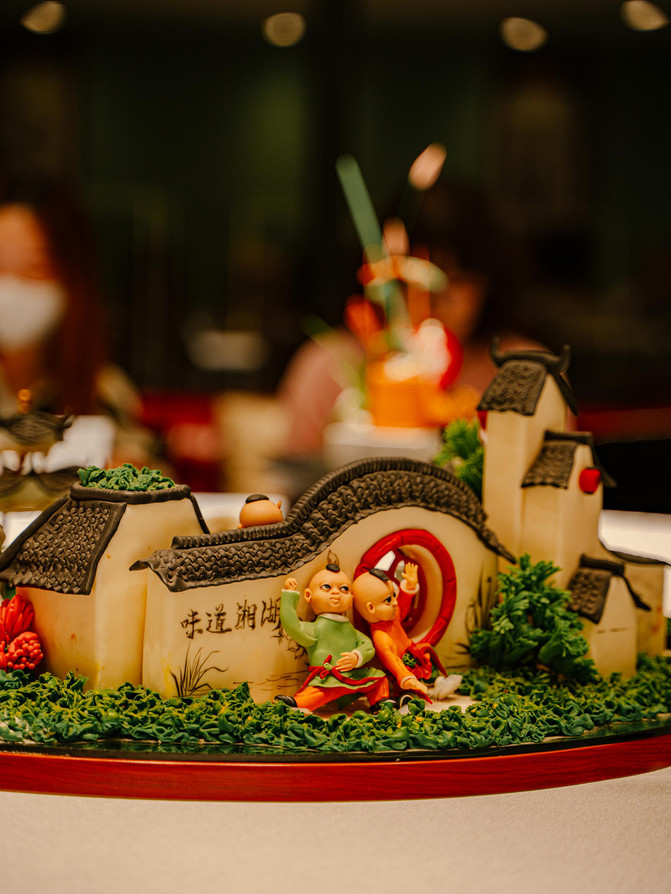
Yue Wang Dongpo Chicken is a specialty of their family. When cooking chicken using Dongpo meat, it is just soft and rotten. It is estimated that friends who like sweet taste will love this dish more. Legend has it that during the King of Yue's hegemony over the country, this dish was indispensable every time he celebrated victory.

The specialty crispy fish tastes good, crispy on the outside and tender on the inside, and a little vinegar flavor refreshes the whole dish.

The pork crab fried rice cake is quite fresh, the meat is very tender, and the rice cake is completely delicious.

Hangzhou Changqiao Polar Ocean Park is located not far from the Kuahuqiao Ruins Museum. Who says that you can't embrace the sea while embracing the lake? Only children make choices, adults only want both.

This marine park is a new type of marine park that integrates polar animals, marine fish displays, and polar experiences. There are regular animal performances in the Ocean Park, as well as the Dolphin Theater, which can accommodate more than 3000 people to watch the performances at the same time. It is very suitable for bringing children to play.


Every venue in Changqiao Ocean Park is very easy to film. You can interact with marine life through the glass. Go straight into the Beluga Sea when you enter the door. Go and have an intimate interaction with the cute giant beluga whale!

Of course, there is also the Dream Jellyfish Palace, which makes you feel like you are in a real ocean through special lights and mirror projection. Jellyfish of all colors and shapes stroll leisurely in the aquarium. They look romantic and dreamy under the blue lights, coupled with dazzling light effects, as long as you are in that dark blue, no matter how frustrated you feel can be cured ~


If it's early, go to various animal theaters to watch various performances!
When I came out of the aquarium, I happened to encounter a dolphin performance here. The cute and flexible dolphins spun and jumped without stopping. They could win all kinds of performances on land waltz and water ballet, making everyone so cute.
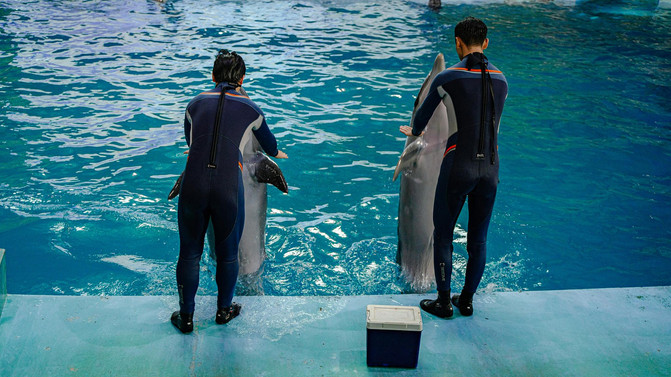
Looking at the lively dolphin, my mood also cheered with its beautiful arc in the sky. Close contact with marine animals can always evoke the softest part of our hearts and make us forget all the worries in life.

Not far away, Qianjiang Fishing Village is a well-known old local restaurant that specializes in local Xiaoshan cuisine and has a guaranteed taste. Both small dishes and large dishes are very exquisite, elegant and fresh.

Steamed river white strips are very delicious. Like fruits and vegetables, fish heads, you must order river fresh.

Farmhouse steamed double smelly food is a specialty in Zhejiang. It combines two of the most stinky things, stinky tofu and stinky amaranth stalks, with some small ingredients such as chopped green onion. However, it "smells smelly and tastes delicious". It is a good way to relieve the heat. Gluttons will miss it if they haven't eaten for a long time.

The night was getting darker and the hustle and bustle gradually quieted down. I drove all the way to Xinchang and stayed at the Slow UU B & B next to Jingling Old Street. The lights were very dreamy on the wall.

The room is mainly in warm colors and is decorated very warmly with a sense of wood. There is a parent-child room, which is very suitable for staying in when bringing children to the surrounding area.

Tour Xinchang, a wonderful night tour on the road to Tang poetry
[Jingling Old Street, exploring the secrets of the long time]
If we talk about a must-have list for road rolling, then the old street must be on the list. The old street is not only washed away with lead flowers, but also a textbook that silently tells history. It is also a good place in the city full of humanistic atmosphere.
Jingling Old Street is located in Jingling Town, located in the southwest of Xinchang County, Shaoxing City, 25 kilometers away from the county seat. Jingling Town is not only surrounded by mountains and rivers, and is known as the "Little Guilin in the South of the Yangtze River", but also has many ancient villages with a history of thousands of years, quietly hidden in this paradise.

This old street was once an important commercial and trade center in Jingling Town and even the Xinchang West Area. It can be said to be in full swing for a time. Founded in the Song Dynasty and developed in the Ming and Qing Dynasties, it has always been the first choice for purchasing and purchasing places for surrounding villagers throughout the ages. However, with the development of society, Jingling Old Street has slowly faded out of people's sight.
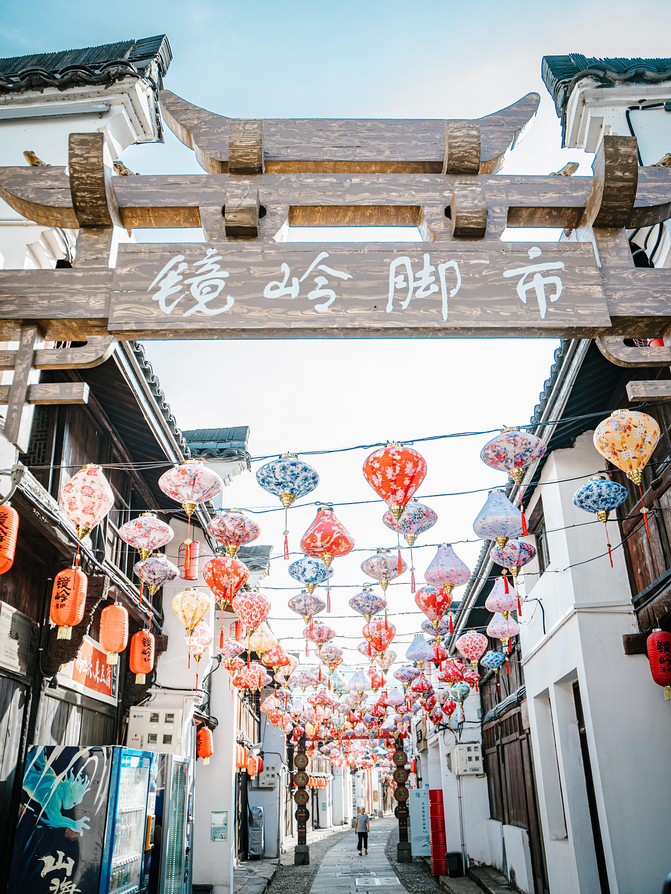
Today's Jingling Old Street has been renovated, which not only retains the original "ancient charm", but also adds creativity of the new era and integrates cultural protection into it.
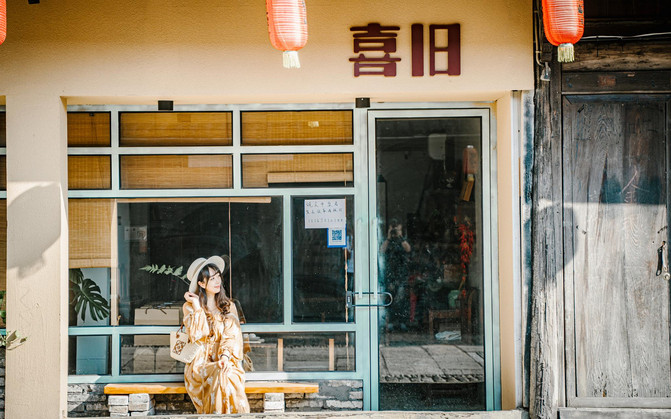
The old supply and marketing cooperatives and Xinhua Bookstore have all become new vitality after being repainted. They not only carry the memories of past generations, but will also carry new stories.


[Tianzhu Wonderland, the blue waves lead you to the deepest place]
Xinchang is a place that can always bring surprises to people. It occupies the mountains, rivers and humanities. Every time it turns around, there is a bay of water, and every time it turns around, there is a mountain.

After seeing so many lakes and mountains, it seems a pity not to really be in this beautiful scenery.

This Tianzhu Wonderland with Danxia landform has always been praised by Xinchang people as the "Small Three Gorges in the South of the Yangtze River". Waterways entering and dry roads exiting are a major feature here.

Tianzhu Lake is sometimes wide and sometimes narrow, winding and extending towards the valley. Take a dragon boat to swim in Tianzhu Lake. Along the way, there are also scenic tours such as penguins welcoming guests, Five Finger Peak, Thousand Year Girl Red, Golden Toad Playing Tortoise, and Origin of Life! Bathed in the breeze in the natural landscape fairyland, the lake water is pure and rippling with blue waves along the way, which also has a unique charm!
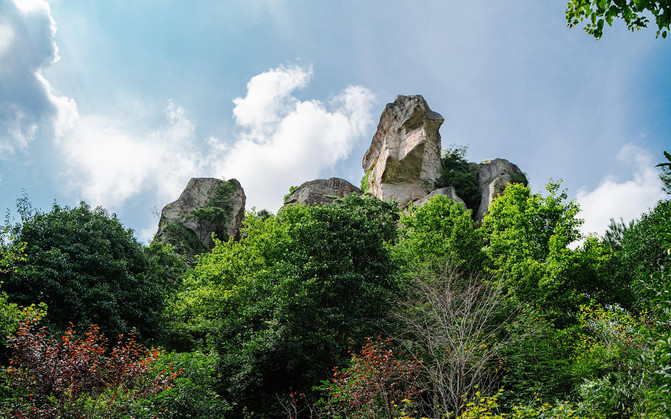


Although the mountains in Tianzhu Wonderland are not high, they are surrounded and very quiet. All you could hear was the rustle of running water and the leaves of the forest.

[The road to Tang poetry, visiting Gushan and dreaming of returning to Tianmu]
I believe everyone must be familiar with the name of the "Silk Road". I wonder how the "Road of Tang Poetry" sounds?

The road to Tang poetry in eastern Zhejiang began in Xixing, Xiaoshan. The main road runs through the Eastern Zhejiang Canal, Jinghu, Kuaiji Mountain, Ruoye River, Caoe River, Yuxi River, Tianmu Mountain, and ends at Tiantai Mountain. It is not only the road to culture in the Tang Dynasty, but also the road to poets in the Tang Dynasty. More than 450 poets such as Li Bai, Du Fu, Meng Haoran, and Bai Juyi set foot in it, leaving more than 1500 beautiful Tang poetry works behind. Tianmu Mountain, the resort with the most poems left, is known as "a Tianmu Mountain, half of which is full of Tang poetry."

Since they are all "semi-Tang poems", such precious cultural heritage must be passed down from generation to generation. The Tang Poetry Road Museum, which retains the handwriting of our ancestors, is located on the top of Gushan Park in Xinchang. It contains the Li Bai Memorial Hall, the Tang Poetry Culture Stele Corridor, and Tianmu Pavilion.

The great poet Li Bai has traveled to Shanzhong three times. Walking into the Tang Poetry Road Museum and looking at the stone inscriptions of Tang poetry, the lingering sound of the poem fairy's "Walking in the Dream of Tianmu" is in my ears.


Although the height of Gushan Mountain is not "across the sky", or "the five mountains cover the red city", standing on the high top of the mountain and looking down, one can't help but wonder whether Qinglian Jushi, who has come to Xinchang three times, has stood in the same position? What did he think?

Climbing the Tianmu Pavilion, you can overlook the top peak of Tianmu Mountain in the southeast direction and appreciate the majestic momentum of "Tianmu Sky and Sky". Looking west, you can see the new appearance of Xinchang City, north, you can see the Tianmu Bridge, and east is Wozhou Mountain and Aviation Town, and at the foot is the Wuxi River, which makes people sigh at the magical craftsmanship of nature.



Enjoy the taste and enjoy the banquet
After climbing the mountain road for so long, it was time to taste delicious food. Yueyanjia's national banquet rice crispy rice is definitely the most surprising dish. On the surface, it looks no different from ordinary rice crispy rice. In fact, the crispy rice is not weakened at all because it is soaked in the soup. Instead, it cleverly combines the delicious soup and the crispy rice.
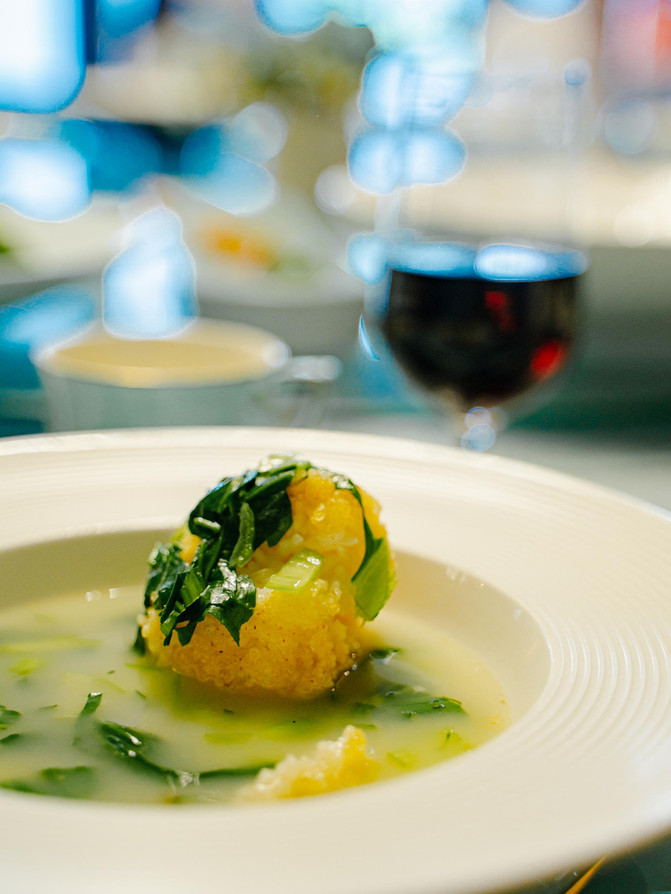
The circle around the spicy chicken looks like eggs at first glance, but it is actually mango capsules. The feeling of the sauce really makes the whole dish different. The sweet mango combination makes the spicy chicken feel refreshed.
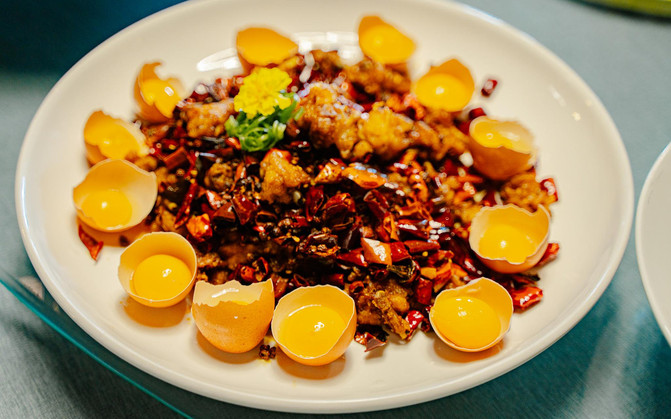
The interior decoration in the store is very elegant and full of petty bourgeoisie! It's great for bringing your sweetheart on a date.

[Meizhu Ancient Village has traveled through a thousand years in the sea of flowers]
When you mention ancient villages, what is the first scene that comes to your mind? It may be green bricks and green tiles, white-walled Western-style buildings, or it may be apricot flowers with slight rain and misty rain. However, this ancient village may have everything on it, but there is an intoxicating sea of flowers.

Meizhu Ancient Village is located ten kilometers southwest of Xinchang County. It was built in the Song Dynasty. Thousands of years passed quietly in the blink of an eye, but the ancient village is still nurturing generations of people in place. The "Xinchang County Annals" of the Republic of China records: "In ancient times, there were many plum trees and settlements, so it was named Meizhu." Today, there are no plum blossoms in Meizhu, except for a 400-year-old camphor tree in the village.

The ancient village retains a large number of valuable ancient buildings from the Ming and Qing Dynasties and the Republic of China, such as Zhaiqiantang, genlou, nunnery, temple temples, folk houses, and shops. The pavilions are grand and open, with cornices carved beams, and the carvings are gorgeous and unique. Style, it can be called a folk architectural carving art museum.
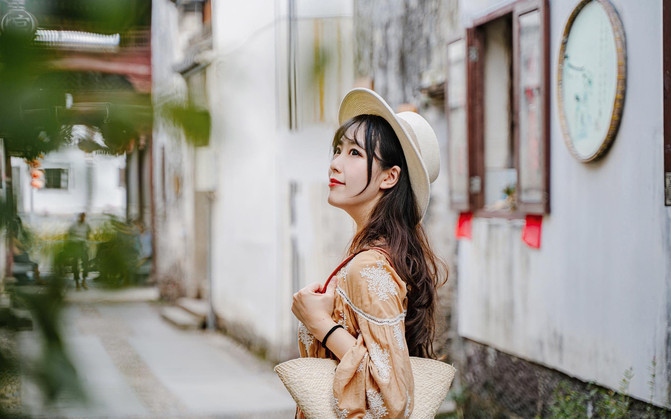
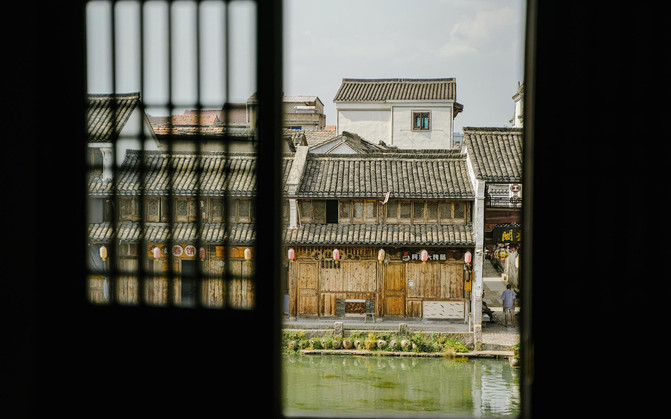
There are many craftsmen working in the shop, and ordinary soil has its own life under their hands.
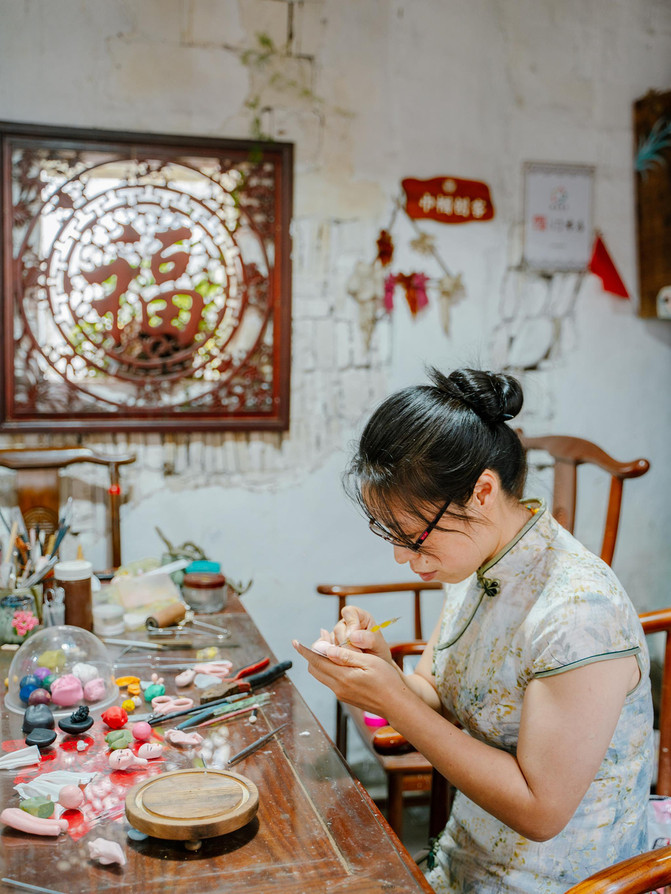
There are also old women who carefully depict paper-cutting. They all have a special set of tools. Such a thin piece of paper is played with in their hands. Meizhu paper-cutting is also a local feature, as well as intangible cultural heritage such as soju and opera.

What is worth mentioning is the large sea of flowers opened up in the north of the ancient village. Flowers are in full bloom in different months. Now a large sunflower field is blooming just as it is written in "The Distant Sunflower Field":"Gold and blue are stuck together on this ancient planet. People walking between gold and blue suddenly feel spotless..."

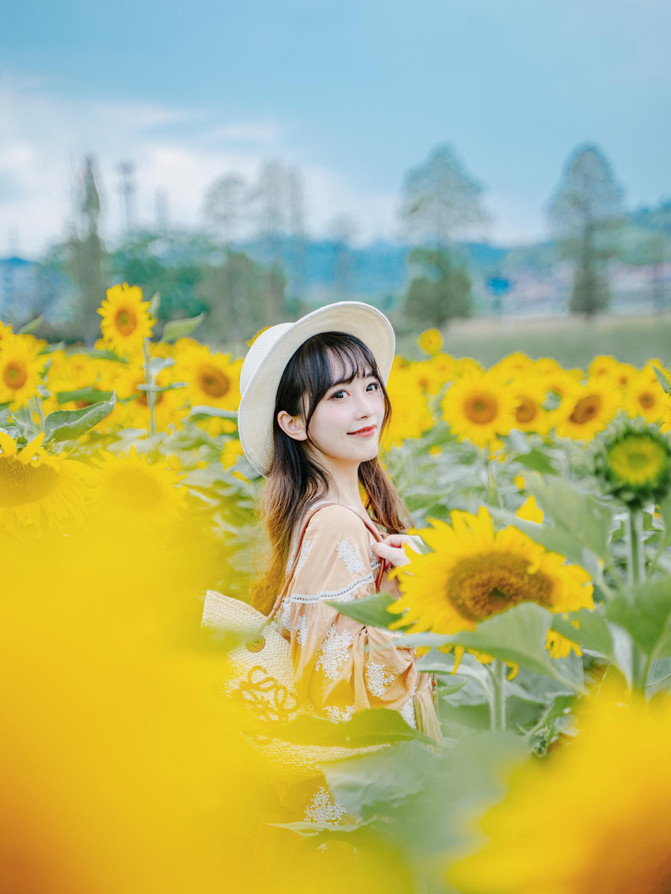
[Strange mountains and seas, the road of holographic lighting heroes]
There were lantern festivals in ancient times, but today there are night tours.
With the support of modern technology, the light effect has undergone earth-shaking changes compared with the past.
I have to say that the immersive fantasy show of "Shanhai Jingqi·Heroic Road" is really cool! The 19 peaks of Chuanyan, with natural cliffs as the curtain and fantasy dense valleys as the scenery, create a feast of light and shadow that integrates vision, hearing and touch for tourists at night!

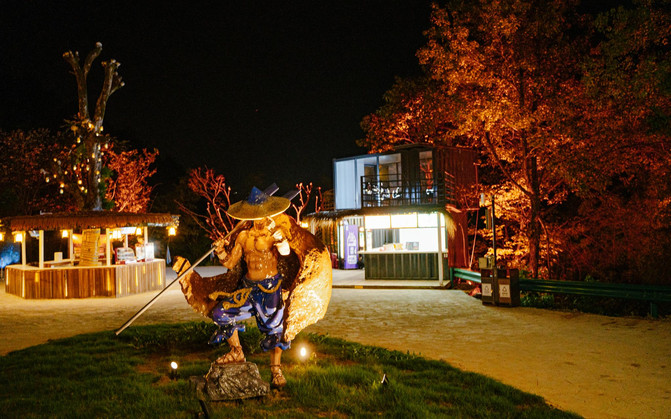
This immersive night tour project with the theme of the CCTV documentary "Shanhai Jingqi" IP series uses a large number of multimedia technologies such as 3D MPPING projection, holographic imaging, dome laser matrix, sound and light interaction, and innovatively uses multi-layer space curtain solution, allowing people to finish this wonderful night tour immersively.

The total tour route is about 2.5 kilometers, and is divided into six chapters: the chaotic world, the angry encounter with Buzhou Mountain, the emergence of heroes, the transformation of bears and resistance to water, the origin of green hills, and the naming of mountains and rivers. At the same time, more than a dozen small plots and interactive chapters scattered in the valley connect the six chapters.
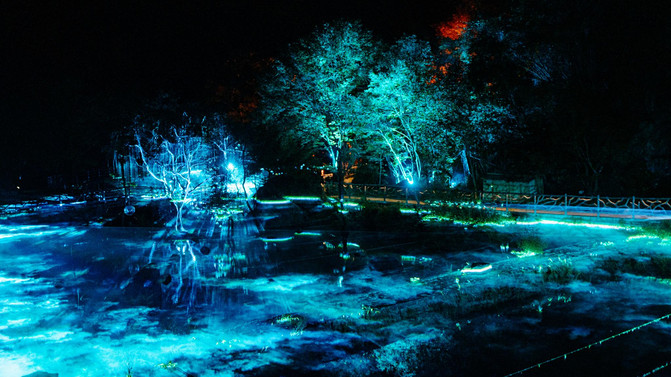
At the beginning, they gathered in a novice village with a primitive tribal style to receive the interactive prop "Lei Si". "Lei Si" can not only light up as a lighting tool, but also help you participate in interactions. It is an important prop to promote the plot.
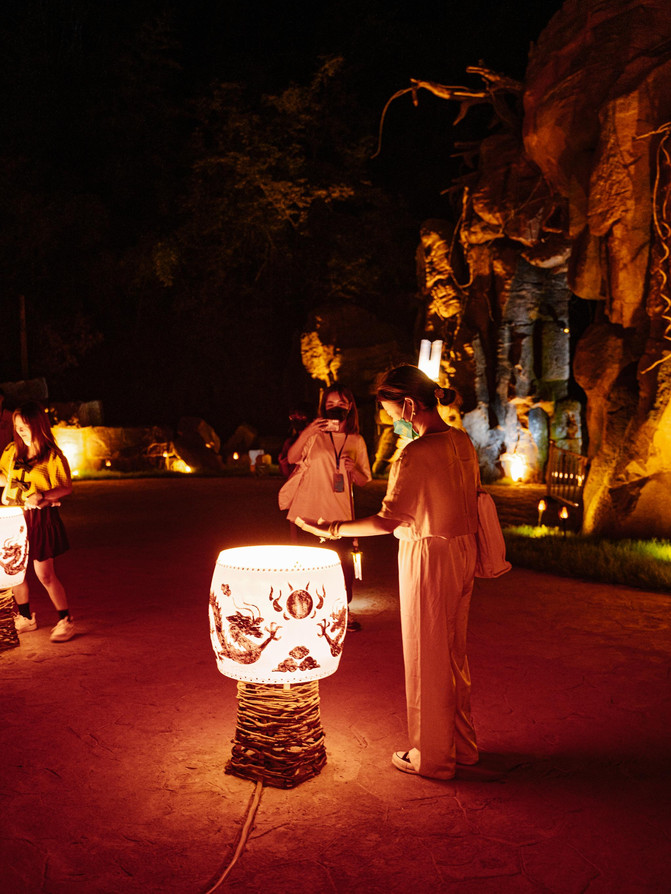
The designed light effect fits the local environment and integrates into it very naturally without being obtrusive.

What is impressive is the 600-meter-long tunnel. Only by walking through clouds, fog, rain, and time and space can you reach the world of mountains and seas. The hanging water droplets and the starry sky tunnel are all super dreamy ~


Later, you can immersively experience the storyline of Dayu's water control in various themed scenes such as "Angry Touch","Heroes Come to the Present","Transformation of Bears to Resist Water", and "Qingqiu Nine Tails", making people feel like traveling through ancient times! Full of experience!

[Tang Poetry Banquet, carefully tasting delicacies and guessing allusions]
A Tianmu Mountain, half of which is full of Tang poetry, Xinchang is a place where you can encounter poetry and distance.
When you come to Xinchang, you must also try the Tianmu Tang Poetry Banquet in this famous city of Tang poetry in eastern Zhejiang. A Tang Poetry Banquet, the dishes, soups, staple foods, snacks, and wine are all named after Tang poetry. Every dish has its allusions. It can be checked. While tasting the delicious food carefully, I also taste the poetry and mood of literati and literati.

This dish is paired with a mini small ladder. I believe it is not difficult to guess that it comes from "wearing Xie Gong's clogs and climbing the green cloud ladder."

The dish "Yue Nu World White" has been made into the appearance of the Four Treasures of the Literary Classics. Not only is the name beautiful, but the shape complements the theme of Tang poetry.

These Xinchang taro dumplings are very soft and glutinous, decorated with lotus shapes. They are taken from the poem: "The bamboo color is green under the stream, and the lotus flower mirror is fragrant." At that time, Li Bai left Yangzhou and entered Shaoxing. He had just entered the Qixi River and was impressed by the beautiful scenery.

This snow-white Xinchang Tangzha Noodle has to be fished out to guess its real name. Not to mention, it really feels like "flying down three thousand feet". Although it is plain noodles, it is beautiful and delicious. It is moderately salty and will not steal the limelight of other dishes.

Even the common fruit platter becomes quite interesting after being named "Whoever collects the spring color will return".

There are mountains and rivers on the dishes, and poems are overflowing on the plates, such as "Tianmu Sky Facing Sky","Tianmu Guest on the Tea Pot","This trip is not for a bass party"... Each dish follows the ancient times rather than imbuing the ancient times, vividly combining Tang poetry culture and food culture.
Taste a poem and taste a dish. Every dish here is matched with a Tang poem. When I came here, I discovered that home-cooked dishes can be so elegant and interesting!
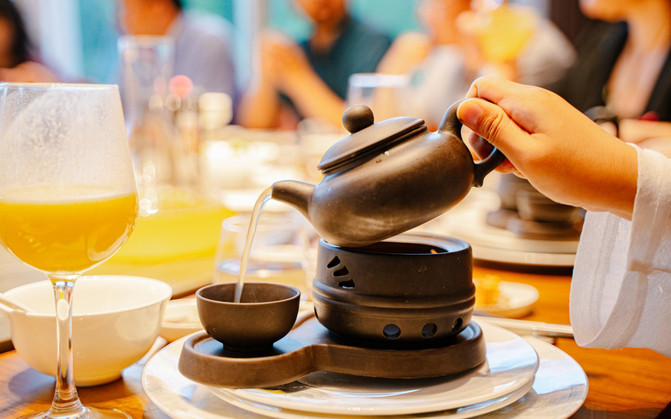
Stay in Xinchang, Tianmu Langyuan Health Valley
It was already night when we returned to Xinchang. We stayed in Tianmu Langyuan Health Valley in Xinchang. In the morning, we could climb the Xianyuan Staircase in the Health Valley to overlook Tianmu Mountain. There was also a large lawn for tourists to play and have picnics. It seemed that natural oxygen bars can always make your fatigue go away!

It is worth mentioning that this is also a picking base with thousands of acres of blueberry orchards. Blueberry wine is brewed by Qingao Winery in Health Valley. The main building of the winery is home to brewing factories, wine tasting and visiting areas and wine collection areas. You can enjoy the fresh air of the natural oxygen bar while tasting wine.


Continue forward and go all the way to Waipokeng Village, a small village located 42 kilometers southwest of Xinchang County, Shaoxing City, Zhejiang Province. It is located at the source of the Tancheng River and borders Dongyang, Shengzhou and Pan'an.

The grandma pit used to be very poor. There are a few saying circulating in the village: There is a grandma pit in Xinchang. If a child is not married to this pit, you can eat six grains for three meals. The road to work is followed by cattle, and you lack money, food, and girls.
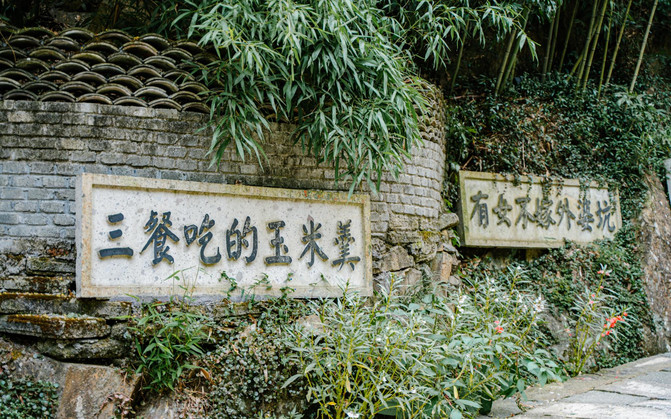
Today's Waipokeng Village has become earth-shaking. As the saying goes, relying on the mountains to eat, and relying on water to feed water. The local villagers rely on their unique geographical environment to grow tea and successfully launched their own "organic tea". It also has the reputation of "the No. 1 Village of the Jiangnan Nation", and you no longer have to live without enough food and clothing.

Waipokeng Village is very famous for its roasted corn flakes. Large tracts of golden flakes are dried outside by the grandma. They are as simple as local villagers and are very cheap.
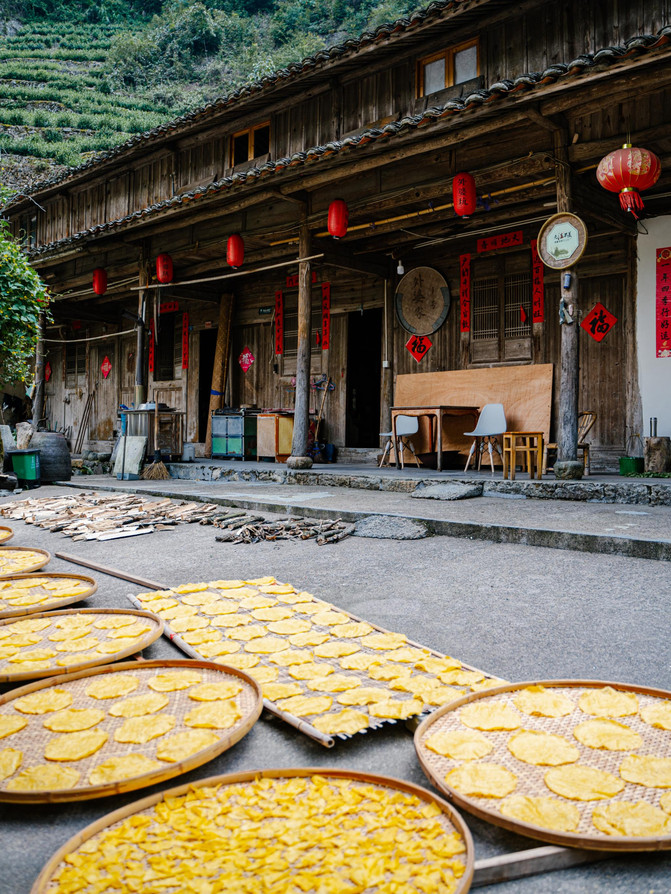
You can also rent ethnic costumes in the village and check in to take photos. With such beautiful mountains and rivers, you can easily find a large picture.

When you come here, you can not only feel the tranquility of traditional Chinese villages and rich village history, but also appreciate the unique folk customs of ethnic minorities and feel the warmth of your "grandma" home.

For two days, I walked through the streets and alleys of Xiaoshan, visited the poetic mountains and rivers of Xinchang, and tasted thousands of bowls of delicacies from hundreds of counties. It turns out that the scenery in "Zhejiang" is the only one who is beautiful when you visit all over the place!

Previous Article:Spring morning in Xiaoshan, walking children to check in Hangzhou New Year's Eve
Next Article:Goddess's Blind Box Restaurant
